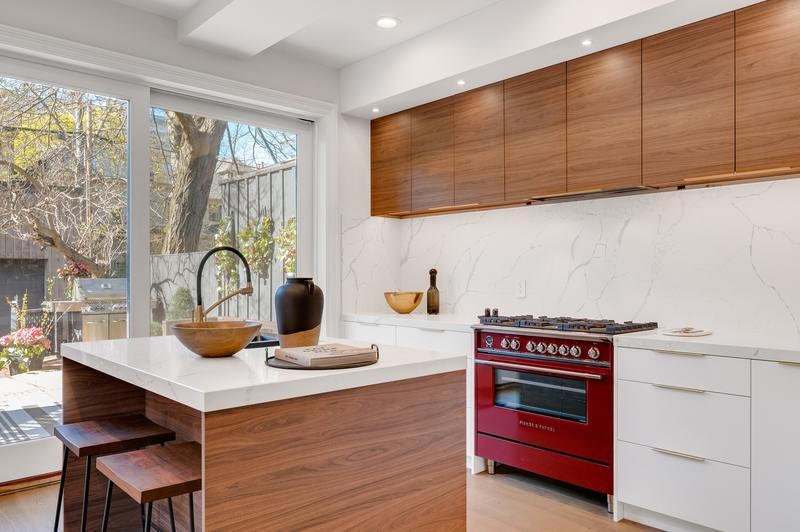A reliable top cabinet free of water damage is a must in any kitchen. This article contains valuable information on how to repair a water damaged top cabinet.
Water damage is one of the main contributors to the deterioration of any furniture, not just top cabinets. This article will provide the steps needed to repair water damage and a few other handy tips.

What kinds of cabinets are susceptible to water damage?
Cabinets can be made from a bunch of different materials. A popular material that is used for cabinets is wood. Unfortunately, wood cabinets are among the most susceptible to water damage.
Water-damaged wood can become a breeding ground for harmful molds. Additionally, when the wood is exposed to too much water, the wood can rot, and the cabinet can break. This can be an expensive repair and a potentially dangerous one too.
Aside from wood, cabinets made from delamination and warping can also deteriorate over time when exposed to water.
Why is water damage bad for cabinets?
Water damage can cause rotting, rusting, swelling, delaminating, and mold and bacteria growth. This type of damage is awful for top cabinets because they often contain valuable kitchen items such as fine china, expensive glasses, and more.
Water damage compromises the strength and integrity of a cabinet, which can cause it to give out and wreck the things inside it. It is essential to identify water damage immediately and treat it accordingly to avoid further damage.
How do you repair water damaged cabinets?
If you ever need to repair water-damaged cabinets, the following guide will be helpful to you.
Step #1. Remove all the items
Before doing anything else, remove all the stuff inside the cabinet. You might have to throw a few things away because of water contamination.
Generally, it is safe to keep the items stored in plastic or glass containers because they are not likely to be soiled by water. However, it would be best if you disposed of things in paper or cardboard containers.
Items in these packages are more likely to have been contaminated by moisture. If there are any cloth or fabrics in the cabinet, you can throw them away or give them a thorough cleaning.
Step #2. Assess the damage
Once the cabinet has been emptied, you can now see how bad the damage is. Do you think you’ll be able to fix it by yourself? Does the extent of the damage require professional help?
Determining how far along the water damage is will significantly help you plan your next course of action. Aside from figuring out what step needs to be taken afterward, assessing the damage can also help you determine if the damage requires the help of a lawyer.
Lastly, assessing the damage can also help you explain the situation to your insurance provider. Sometimes, water damage is included in the insurance coverage, so make sure to check.
Step #3. Remove the doors
This step is not a necessity, but it is helpful. Removing the doors of the cabinet can help you reach other parts more easily. Not only that, but you can also have a better view of the inside to see if there are any signs of damage there.
Step #4. Remove the excess water
You can’t allow the water in the cabinet to stay there. Prolonged exposure to water can cause the material to deteriorate at a much faster rate.
Remove all the excess water using thick towels. If towels are not available, you can also opt for blankets.
Once the extra water has been removed, you can use rags to wipe dry the surfaces. After doing this, the surfaces should feel dry to the touch.
Step #5. Fix what can be fixed
Once the surfaces are dry, you can further determine the extent of the damage. Sometimes, applying some carpenter’s glue, adhesives, and clamps can go a long way. Water stains can be fixed by sanding the finish and applying oxalic acid.
Step #6. Replace damaged parts
Check the cabinets to see if any parts have been damaged beyond repair. Do not attempt to salvage these items because they can compromise the structural integrity of the cabinet. Instead, replace them immediately.
Step #7. Refinish the cabinets
After conducting repairs, you will notice that the cabinet no longer appears new. You can refinish your cabinets, either professionally or by yourself.
To do this, lightly sand the wood to remove the finish. Wipe down and let dry. Once dry, you can apply sealant, stain, and topcoat.
How do you avoid water damage?
Water damage is easily avoidable. Just make sure to know how the plumbing system in your home works and reinforce any pipes or water outlets prone to leakage. Aside from this, you can also opt to install water detection devices to help you identify leaks.
Conclusion
Water damage is pesky and can often cost a considerable sum of money. This article taught you how to repair a water damaged top cabinet without having to break the bank! The steps outline how to salvage a damaged cabinet with ease.
